Key Takeaways
- African fashion colors offer a vibrant and dynamic palette.
- Cultural exploration reveals the richness of traditional African shades.
- Style guides help navigate the myriad of African fashion trends.
- Outfit inspiration abounds in African fashion’s bold hues.
- A spotlight on the unique color combinations in African trends.
- “Continental chic” captures the essence of modern African style.
- Traditional African patterns: a blend of history and fashion.
- The fashion journey through Africa’s diverse textile heritage.
- Understanding the symbolism behind African colors and patterns.
- Embracing African fashion colors for a bold, unique style statement.

The radiant spectrum of African fashion colors extends far beyond the stereotypical bright beads and bold patterns. It’s a vast canvas, rich with history, cultural significance, and a pulsating sense of contemporary style. This article delves deep into the heart of African fashion colors, exploring their cultural roots, the evolution of style, and the vibrant hues that paint the African fashion landscape today.
Cultural Roots of African Fashion Colors
African fashion is a testament to the continent’s rich cultural heritage. Each region boasts its own unique palette, deeply entrenched in tradition and symbolism. From the earthy reds of Kenyan Maasai to the royal purples and golds of Ghanaian Kente, these colors tell stories of history, identity, and community. The cultural exploration of these hues offers a fascinating glimpse into the diverse tapestry of African societies.
Symbolism in Color
African fashion colors are not only visually striking but also rich in cultural significance. In African clothing and textiles, each color carries a unique meaning. For example, gold in African fashion often symbolizes wealth and prosperity, while green represents growth and fertility. Understanding these symbolic color associations deepens your appreciation of African fashion, transforming every garment into a meaningful narrative and a vibrant expression of cultural heritage.
Regional Variations
The variations in color preferences and styles across Africa are remarkable. In North Africa, you’ll find more subdued, earthy tones reflecting the desert landscape, while Sub-Saharan Africa is renowned for its use of vibrant, bold colors. These regional differences are not just aesthetic but speak to the environmental, historical, and social factors that influence fashion.
The Evolution of African Fashion Styles
African fashion has experienced a remarkable transformation, evolving from traditional African garments to innovative modern runway designs that blend classic African patterns with contemporary fashion styles. This transformation highlights not only a shift in fashion preferences but also an ongoing dialogue between African cultural identity and international fashion trends.
The Fusion of Old and New
Designers are increasingly blending traditional African colors and patterns with modern fabrics and styles. This fusion creates a “continental chic” look that honors heritage while embracing modernity. It’s a style that resonates globally, breaking stereotypes and redefining African fashion on the world stage.
The Global Impact
African fashion’s global impact is undeniable. From Hollywood red carpets to Paris runways, African colors and designs are being celebrated and integrated into mainstream fashion. This global appeal is a testament to the versatility and timelessness of African fashion colors.

Vibrant Hues and Outfit Inspiration
African fashion colors are a playground for those who love vibrant hues and bold combinations. The palette is extensive, ranging from fiery oranges and reds to cool blues and greens, offering endless outfit inspiration for both everyday wear and special occasions.
Everyday Elegance
Incorporating African colors into daily wear can be as simple as choosing accessories with African prints or as bold as donning a brightly colored Ankara dress. The key is to balance the vibrant colors with neutral tones to create a look that’s both elegant and eye-catching.
Special Occasion Wear
For special occasions, African fashion truly shines. Traditional garments, often in bright, celebratory colors, are adorned with intricate patterns and embroidery, making them perfect for weddings, festivals, and other significant events. These outfits not only make a fashion statement but also connect the wearer to their cultural roots.
Traditional Shades: A Fashion Journey
To fully appreciate African fashion colors, one must embark on a journey through the continent’s history. Traditional shades are not arbitrary choices; they are imbued with historical significance and have evolved alongside the continent’s narrative.
Historical Significance
Many traditional African colors have been used for centuries, with specific shades and patterns passed down through generations. These colors often had societal roles, indicating status, community, and even marital status.
The Journey of African Textiles
African textiles, with their distinctive colors and patterns, have journeyed from local markets to global fashion hubs. Understanding this journey provides insight into how African fashion has adapted and thrived in a global context, with traditional colors and patterns taking on new life in modern designs.
African Trends: Color Spotlight
African fashion trends are constantly evolving, but the spotlight remains firmly on the inventive use of color. Designers are not afraid to experiment, often combining shades in unexpected ways that challenge conventional fashion norms.
Bold Color Combinations
African fashion dismisses the notion of ‘safe’ color combinations, instead embracing bold and often unconventional pairings. This fearlessness in color choice is part of what makes African fashion so distinctive and exciting.
The Future of African Fashion Colors
As we look to the future, African fashion colors continue to evolve, influenced by both local and global trends. The growing interest in sustainable and ethical fashion also shows a resurgence in natural dyes and traditional coloring methods, adding another layer to the rich story of African fashion colors.
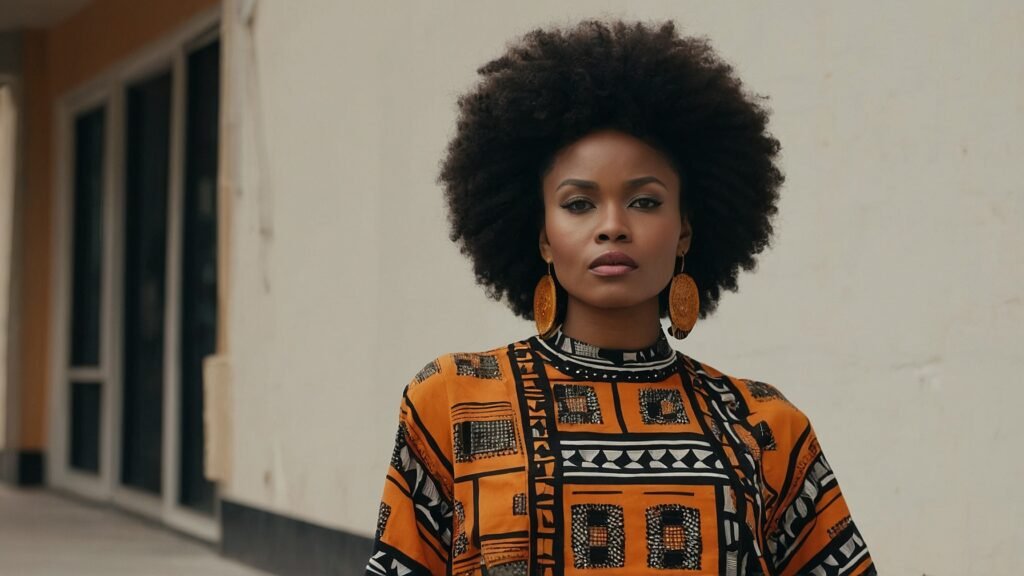
The Role of Color in African Cultural Festivals
African cultural festivals are a riot of color, each hue playing a significant role in the celebrations. These festivals, often steeped in tradition, showcase the continent’s love for vibrant colors, with each color carrying a distinct meaning and purpose.
Festival Color Significance
- Red: Often signifies sacrifice and spirituality.
- Yellow: Symbolizes wealth, fertility, and beauty.
- Green: Represents growth, healing, and prosperity.
- Blue: Symbolizes peace, harmony, and love.
Notable Festivals and Their Colors
- Chale Wote Street Art Festival, Ghana: Known for its vibrant street art, showcasing a spectrum of colors that represent the country’s artistic heritage.
- Gerewol Festival, Niger: Features the Wodaabe men in elaborate makeup and colorful attire, celebrating beauty and marriage.
African Fashion Designers and Their Color Philosophies
Contemporary African designers are at the forefront of bringing African fashion colors to the global stage. Each designer has a unique philosophy regarding the use of color, blending traditional hues with modern design elements.
Influential African Designers and Their Use of Color
- Laduma Ngxokolo: Known for incorporating traditional Xhosa beadwork colors into modern knitwear.
- Lisa Folawiyo: Celebrated for her use of Ankara fabric, reimagining traditional patterns in contemporary color palettes.
Quote: “African fashion is not just about the colors; it’s about telling a story, evoking a feeling, and celebrating our heritage.” – Lisa Folawiyo
The Psychological Impact of African Fashion Colors
Colors in African fashion aren’t just visually appealing; they have psychological impacts as well. The bright and bold hues commonly used in African attire are known to uplift mood and express a sense of confidence and vitality.
How African Colors Affect Mood
- Bright Reds and Oranges: Energizing and stimulating.
- Deep Blues and Greens: Calming and reassuring.
- Vibrant Yellows: Optimistic and uplifting.
African Fashion Colors in Global Trends
The influence of African fashion colors on global trends has been growing significantly. From high fashion to street style, the vibrant hues and unique patterns of African fashion have found a place in the wardrobes of fashion enthusiasts around the world.
Global Trends Inspired by African Colors
- Ethnic Prints: Bold African patterns becoming popular in mainstream fashion.
- Color Blocking: Inspired by the fearless color combinations seen in African attire.
- Sustainable Fashion: Embracing natural dyes and eco-friendly African textiles.
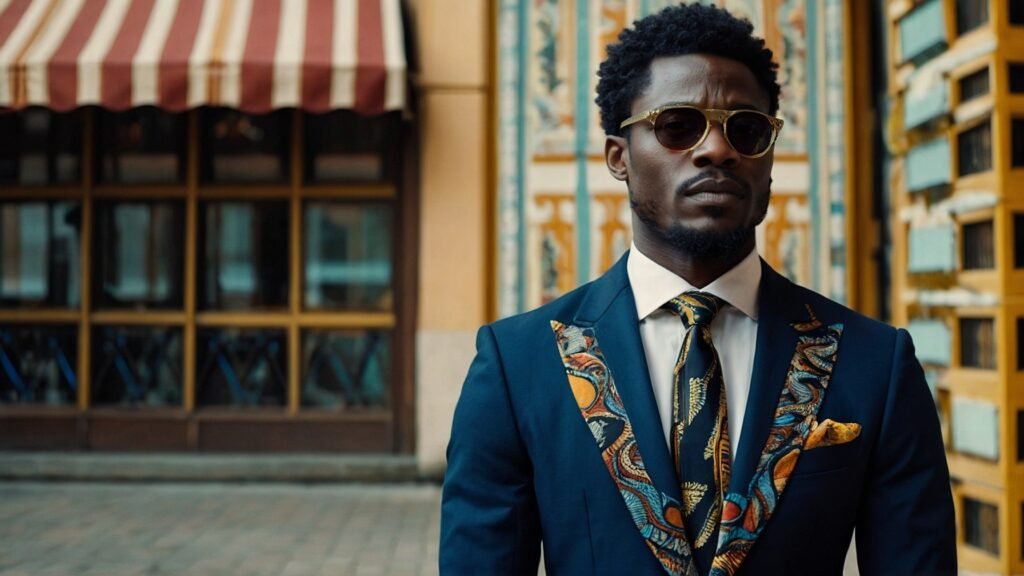
The Art of Accessorizing with African Colors
Accessories play a crucial role in African fashion, often adding a pop of color to an outfit. From jewelry to headwraps, the choice of accessories can significantly influence the overall look.
Tips for Accessorizing with African Fashion Colors
- Statement Jewelry: Choose pieces in bold African colors to complement a neutral outfit.
- Colorful Headwraps: Add a vibrant headwrap in traditional African fabric to elevate your style.
- Beaded Bags and Shoes: Incorporate accessories with African beads for a subtle yet striking look.
Table: Accessorizing with African Colors
| Accessory Type | Suggested Colors | Style Impact |
|---|---|---|
| Jewelry | Red, Yellow, Blue | Bold, Eye-catching |
| Headwraps | Green, Orange, Pink | Vibrant, Stylish |
| Bags & Shoes | Multicolor Beads | Unique, Trendy |
Continuing with the in-depth exploration of “African Fashion Colors: Beyond the Bright Beads and Patterns,” we delve into additional aspects that highlight the richness and diversity of African fashion.
The Interplay of African Patterns and Colors
African fashion is as much about patterns as it is about colors. The intricate designs found in traditional attire are deeply symbolic and add layers of meaning to the already vibrant color palettes.
Understanding African Patterns
- Geometric Motifs: Often symbolize concepts like unity, strength, and fertility.
- Animal Representations: Used to convey attributes like wisdom (turtle) or royalty (lion).
- Natural Elements: Patterns mimicking nature, like rivers or mountains, often symbolize life and continuity.
Patterns That Define African Fashion
- Adinkra Symbols: Originating from Ghana, these symbols are rich in proverbial meaning.
- Mudcloth Patterns: A Mali tradition, these patterns tell stories through symbols and are typically rendered in black and white, providing a striking contrast to the more colorful African fabrics.
Seasonal Hues in African Fashion
Just like fashion trends globally, African fashion also responds to seasonal changes, with color palettes subtly shifting to reflect the time of the year.
Seasonal Color Variations
- Spring/Summer: Bright, lively hues like yellows, oranges, and light greens dominate, reflecting the vibrancy of these seasons.
- Fall/Winter: Deeper, more muted tones like browns, deep reds, and dark greens are preferred, echoing the earthy tones of these seasons.
Adapting to Climate and Culture
- Light Fabrics for Warmer Months: Linen and light cottons in bright colors.
- Heavier Textiles for Colder Seasons: Thicker fabrics in darker hues, often layered.
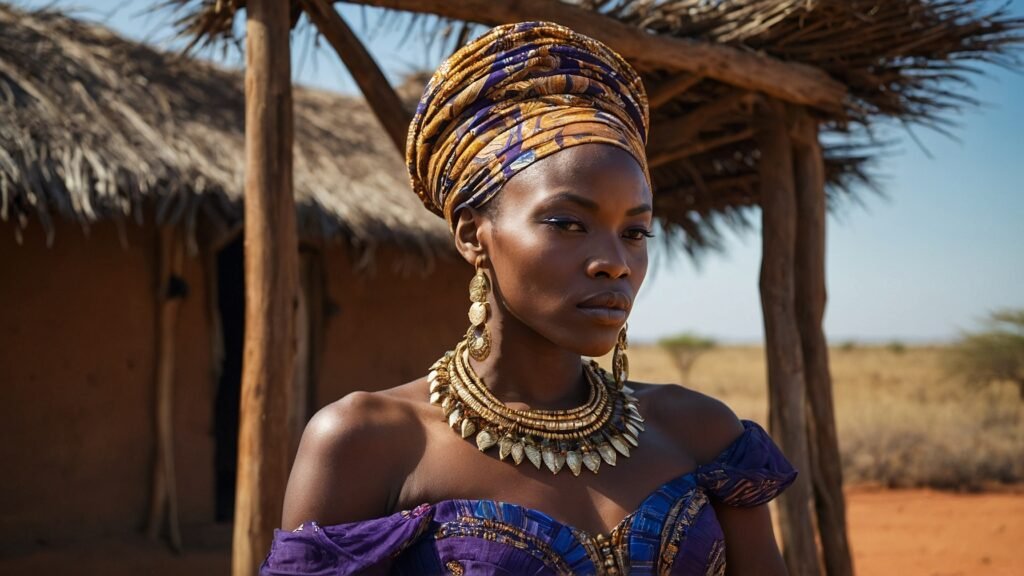
African Fashion Colors in Daily Life
In African communities, fashion and daily life are intricately connected. The clothes worn on a day-to-day basis are not just about style but are expressions of identity and heritage.
Daily Wear and Color Choices
- Casual Wear: Bright Ankara prints for regular wear, reflecting a love for color even in everyday life.
- Work Attire: More subdued colors with occasional vibrant accents, balancing professionalism with cultural expression.
Color and Social Significance
- Weddings and Ceremonies: Bright, celebratory colors like reds and golds.
- Funerals: Often dominated by darker colors, but with specific cultural variations, like the use of red in South Africa to symbolize mourning.
The Future of African Fashion Colors in Sustainability
The global fashion industry’s pivot towards sustainability has significant implications for African fashion, particularly in the use of colors and dyes.
Sustainable Practices in Color Usage
- Natural Dyes: Increasing use of eco-friendly dyes derived from local plants and minerals.
- Recycled Fabrics: Upcycling existing materials, leading to unique color combinations and patterns.
The Role of African Fashion in Eco-Friendly Trends
- Ethical Fashion Movements: Emphasizing traditional, handcrafted methods that are inherently sustainable.
- Global Collaborations: African designers partnering with global brands to promote sustainable fashion practices.
African Fashion Colors in Pop Culture and Media
African fashion colors have made a significant impact on global pop culture and media, often seen in music videos, movies, and social media, showcasing the continent’s rich fashion heritage to a global audience.
African Fashion in Music and Film
- Music Videos: African artists showcasing traditional attire in vibrant colors, influencing fans worldwide.
- Movies: Films like “Black Panther” brought African-inspired fashion to the forefront, highlighting traditional colors and patterns.
Social Media’s Role in Promoting African Fashion
- Influencers and Bloggers: Key figures showcasing African fashion and colors, influencing trends and perceptions.
- Viral Trends: Traditional African styles going viral, bringing global attention to the continent’s fashion scene.
Iconic African Textiles and Their Color Significance
| Textile | Origin | Dominant Colors | Cultural Significance |
|---|---|---|---|
| Kente Cloth | Ghana | Gold, Green, Red, Blue | Symbolizes royalty, sacredness, and spiritual strength |
| Ankara Fabric | West Africa | Multicolored | Represents African heritage and creativity |
| Mudcloth (Bògòlanfini) | Mali | Black, White, Brown | Tells stories and traditions through symbolic patterns |
| Shweshwe | South Africa | Blue, Red, Brown | A symbol of African modernity and tradition |
| Dashiki Fabric | West Africa | Yellow, Red, Blue | Emphasizes African identity and unity |
| Maasai Shuka | Kenya | Red, Blue, Stripes | Represents Maasai warriorhood and endurance |
| Adire Cloth | Nigeria | Indigo, White | Symbolizes wealth and well-being |
This table provides a snapshot of some of the most iconic African textiles, highlighting their origins, dominant colors, and cultural significances.
Conclusion
The vibrant world of African fashion colors is a vivid tapestry woven from the threads of history, culture, and modern innovation. From the deep reds and greens of traditional Kente cloth to the bold, contemporary patterns of Ankara fabric, African fashion colors tell a story of a continent rich in diversity and creativity.
As we have explored, these colors and patterns are not just about aesthetic appeal; they carry deep cultural, psychological, and social significances. African fashion continues to influence global trends, breaking barriers and redefining what it means to be stylishly and culturally expressive.
Beyond the bright beads and patterns lies a rich narrative of African identity, resilience, and evolving beauty that continues to inspire and captivate the world.

Frequently Asked Questions
1. What do the different colors in African fashion symbolize?
Answer: In African fashion, colors carry significant symbolism. Red often represents sacrifice, yellow symbolizes wealth and fertility, green signifies growth and prosperity, and blue denotes peace and love. Each color holds a unique cultural meaning.
2. How has African fashion influenced global fashion trends?
Answer: African fashion has significantly influenced global trends through its unique color palettes, bold patterns, and sustainable practices. The use of traditional African textiles and designs in mainstream fashion has brought a fresh, vibrant perspective to the global fashion scene.
3. What are some popular African textiles and their characteristics?
Answer: Popular African textiles include Kente cloth, known for its colorful and intricate patterns symbolizing royalty; Ankara fabric, renowned for its vibrant, bold prints; and Mudcloth, with its symbolic black and white patterns. Each textile is unique and holds cultural significance.
4. Can African fashion colors be incorporated into everyday wear?
Answer: Absolutely. African fashion colors can be incorporated into daily wear through accessories like jewelry and headwraps, or clothing items like dresses and shirts featuring African prints. The key is to balance the vibrant colors with more neutral tones.
5. How do seasonal changes affect African fashion colors?
Answer: Seasonal changes in Africa influence the color palette in fashion. Brighter, livelier hues are preferred in spring and summer, reflecting the vibrancy of these seasons, while fall and winter see more muted tones like browns and deep greens, echoing the earthier tones of these seasons.
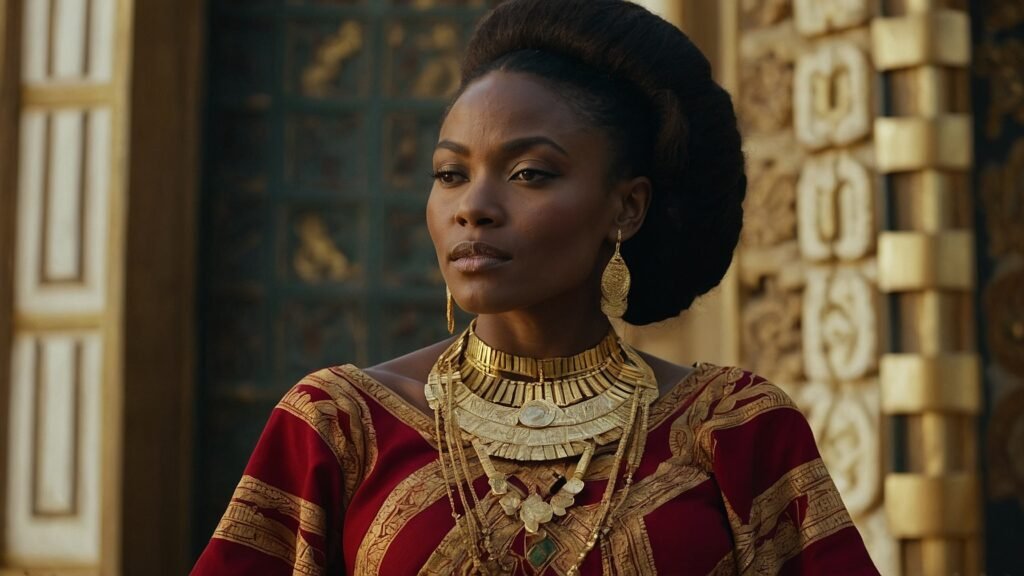
6. What role does sustainability play in African fashion?
Answer: Sustainability plays a significant role in African fashion, with a growing trend towards using natural dyes and eco-friendly textiles. Many African designers focus on sustainable practices, emphasizing traditional, handcrafted methods that are environmentally friendly.
7. How can I style African fashion colors for a formal event?
Answer: For formal events, you can choose elegant African garments like a brightly colored Ankara dress or a traditional Kente outfit. Pair these with subtle accessories to let the colors stand out and maintain an elegant look.
8. What is the significance of African patterns in fashion?
Answer: African patterns in fashion are deeply symbolic, often representing social status, identity, and cultural heritage. They range from geometric motifs to natural elements and animal representations, each with its own meaning and story.
9. Are African fashion colors suitable for all skin tones?
Answer: Yes, African fashion colors are versatile and can complement all skin tones. The key is to find the right shades and combinations that enhance your natural complexion.
10. How has social media influenced the popularity of African fashion?
Answer: Social media has played a pivotal role in popularizing
African fashion globally. Influencers and fashion bloggers showcase African styles, patterns, and colors, reaching a wide audience and inspiring fashion enthusiasts worldwide.
11. Can African fashion be considered eco-friendly?
Answer: Many aspects of African fashion are inherently eco-friendly due to the use of natural, sustainable materials and traditional, low-impact manufacturing methods. The recent focus on sustainable practices has further reinforced African fashion’s eco-friendly nature.
12. How can someone new to African fashion start incorporating it into their wardrobe?
Answer: Start by incorporating small elements like accessories with African prints or colors. Gradually, you can include larger pieces like shirts, dresses, or trousers featuring African designs. Mixing these elements with your existing wardrobe allows for a seamless introduction to African fashion styles.
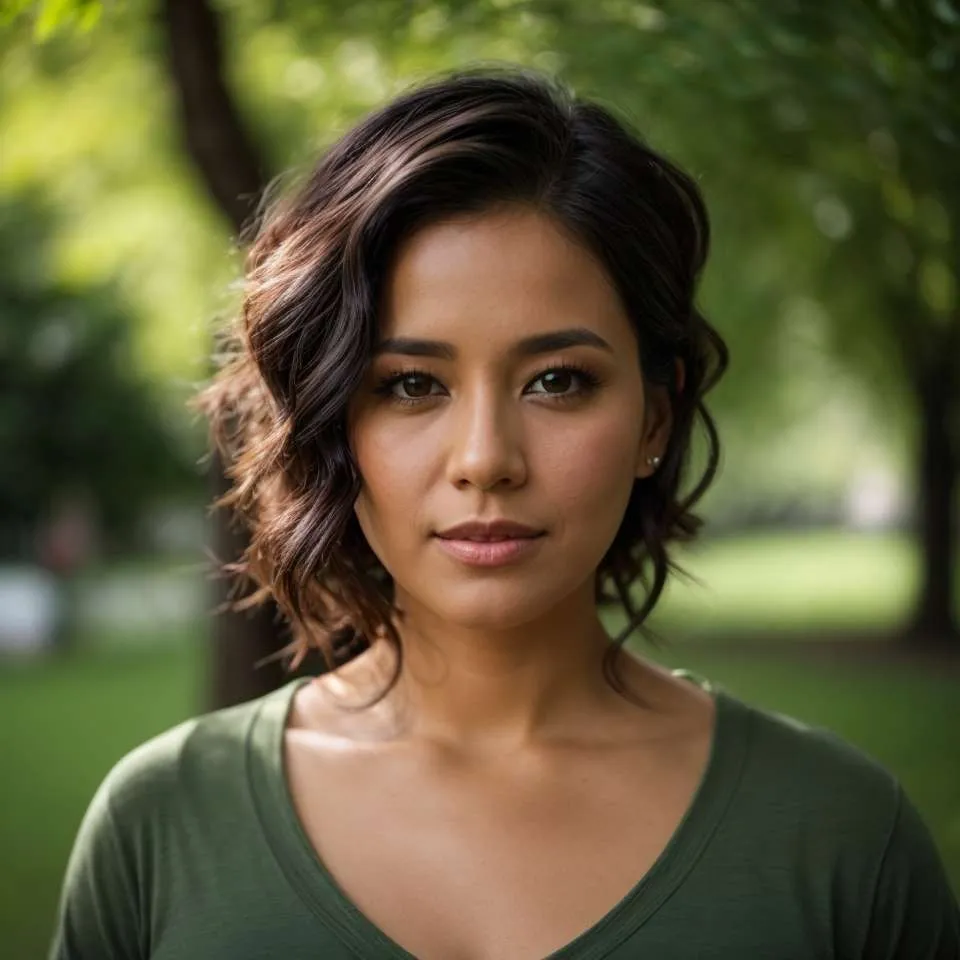
Joanna Perez, with a degree in Creative Writing, excels in recommending distinctive clothing color mixes and trends that deeply connect with readers. She simplifies the often daunting task of color selection, making fashion decisions more personalized and impactful. Her passion for vibrant color palettes and the stories they tell makes her an indispensable voice in the fashion community.
Reviewed By: Marcella Raskin and Anna West
Edited By: Lenny Terra
Fact Checked By: Sam Goldman
Photos Taken or Curated By: Matthew Mansour
